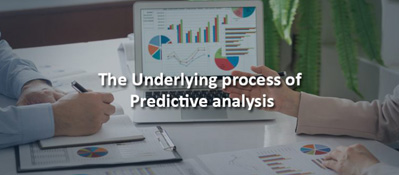The accessibility, accuracy, and wealth of data on the Securities and Exchange Commission’s EDGAR filing system make it an invaluable resource for investors, asset managers, and analysts alike. Cognitive technologies are changing the way financial institutions and individuals use data reservoirs like the SEC EDGAR. In a world that is being increasingly powered by data, artificial intelligence-based technologies for analytics and front-offices processes are barely optional anymore. Technology solutions are getting smarter, cheaper, and more accurate, implying that your team’s efforts can be directed towards high-value engagements and strategic implementations.
DeepSight™ by Magic FinServ is a tailor-made solution for unstructured data-related challenges of the financial services industry. It uses cutting-edge technology to help you gain more accurate insights from unstructured and structured data, such as datasets from the EDGAR website, emails, contracts & documents, etc. saving over 70% of the existing costs.
AI-based solutions significantly enhance the ability to extract information and turn into knowledge from the massive data deluge, therefore providing enormous critical information to make decisions. This often translates to building higher competitiveness &, therefore, higher revenue.
What are the challenges of SEC’s EDGAR?
The SEC’s EDGAR presents vast amounts of data of public companies’ filed corporate documents, including quarterly and annual reports. While the reports are comprehensive and better accessible on public portals than before, filings such as daily filings and forms require much more diligent effort to peruse since it is tedious. There is also an increased margin of human error and bias when manually combing through data in such volumes. Quick availability of this public data also means that market competitors track and process it fast, in real-time.
The numerous utilization possibilities of this data come with challenges in analysis and application. The issue of external data integration into fund management operations has been a legacy problem. The manual front-office processing of massive datasets is tedious and fragmented today but changing fast. Analysis of such large amounts of data is time-consuming and expensive; therefore, most analysts only utilize a handful of data points to guide their investment decisions, leaving untapped potential trapped in the other data points.
After a lukewarm 1.1 percent organic net flow in the US every year between 2013 and 2018, cognitive technologies have now brought about a long-due intervention in the form of digital reinvention. Previously limited to applications in the IT industry, these technologies have been transforming capital management for a short while, but with remarkable impact. While their appearance in finance is novel, they present unique use cases to extract and manage data.
How can technology help with the processing of EDGAR data used in the industry?
Data from EDGAR is being used across various business applications. Intelligent reporting, zero redundancies, and timely updates ultimately drive the quality of investment decisions. As investment decisions can be highly time-sensitive, especially during volatile economic conditions, extracting and tracking relevant information in real-time is crucial.
Magic DeepSight™ is trained to extract relevant and precise information from SEC’s EDGAR, organize this data as per your requirements, deliver it in a Spreadsheet or via API’s or even better ingest it directly into your business applications. Since Magic DeepSight™ is built ground-up with AI technology, it has a built-in feedback loop, allowing you to train the system automatically with every use.
This focused information retrieval and precision analysis hastens and enhances the investment assessment process of a fund or an asset manager– a process that is fraught with tedious data analysis, complicated calculations, and bias when done solely manually.
Investment advice collaterals that are accurate, informative, and intelligible are part of the value derived through Magic DeepSight™. NLP and AI-driven tools, especially those trained in the language of your business ecosystem, can help you derive insights across multiple software environments in their appropriate fields. And all of it can be customized for the stakeholder in question.
Meanwhile, tighter regulations on the market have also increased the costs of compliance. Technology offsets these costs with unerring and timely fulfillment of regulatory requirements. The SEC has company filings under the magnifying glass in recent exams, and hefty fines are being imposed on firms for not meeting the filing norms. Apart from pecuniary implications, fulfilling these requirements pertain to your firm’s health and the value perceived by your investors.
What’s wrong with doing it manually?
Most of the front-office processes continue to be manual today, forcing front-office analysts slugging through large chunks of information to gain valuable insights. The information on EDGAR is structured uniformly, but the lengthy retrieval process negates the benefits of this organization of data. For example, if you wish to know acquisition-related information about a public company, you can access their Form S-4 and 8K filings easily on the SEC EDGAR website. But going through all the text to precisely find what is needed takes time. With Magic DeepSight™, you can automate this extraction process so analysts can focus on the next steps.
And while a team of analysts is going through multiple datasets quickly, likely, relevant insights from the data that falls outside the few main parameters being considered are overlooked. And if such a hurdle arises with organized data, processing unstructured documents with large blocks of text, press releases, company websites, and Powerpoint presentations unquestionably takes much longer and is equally problematic. With Magic DeepSight™, you can overcome this blind spot. It can quickly process all values in a given dataset, and using NLP, it efficiently extracts meaningful information from unstructured data from multiple sources. Using this information, Magic DeepSight™ can provide you with new patterns and insights to complement your research team.
How does Magic DeepSight™ transform these processes?
While most data management solutions available in the market are industry-agnostic, Magic DeepSight™ is purpose-built for the financial domain enterprise. AI models, such as that of Magic DeepSight™ trained on financial markets’ datasets, can comprehend and extract the right data points. Built with an advanced domain-trained NLP engine, data is analyzed from an industry perspective and customized to your needs. Magic DeepSight™ is available on all cloud environments and on-premises if needed. Moreover, it integrates across your existing business applications without causing any disruptions to your current workflow.
DeepSight™ is built on a reliable stack of open source libraries, complimented by custom code, wherever needed, and trained to perfection by our team. This versatility is also what makes it easily scalable. Magic DeepSight™ can treat a wide range of information formats and select the most appropriate library for any dataset. By using Magic DeepSight™, Search—Download–Extraction of relevant information from the SEC EDGAR database can become easy and efficient. Information on forms such as disclosures on a 10K, including risk assessment, governance, conflict of interest, etc. is accurately summarized in a fraction of the time taken previously, freeing up space for faster and better-informed decision making.
But it is more than just a data extraction tool. DeepSight™ is also integrated with other technologies such as RPA, smart contracts, workflow automation, and more– making it an end-to-end solution that adds value to each step of your business processes.
Our team can also customize DeepSight™ to your enterprise’s requirements delivering you automated, standardized, and optimized information-driven processes across front-to-back offices.
What business value does Magic DeepSight™ provide?
- It completely automates the process of wading through vast amounts of data to extract meaningful insights saving personnel time and effort, thus reducing costs up to 70%.
- It becomes an asset to the research processes by employing NLP to extract meaningful information from an assortment of unstructured document types and formats, improving your firm’s overall data reservoir quality.
- The band of your insights, made possible with AI, offer a richer perspective that was previously hidden, thus helping you drive higher revenues with better-informed investment decisions.
Magic DeepSight™ digitally transforms your overall operations. Firms that adopt AI, data, and analytics will be better suited to optimize their business applications.
To explore Magic DeepSight™ for your organization, write out to us mail@magicfinserv.com







